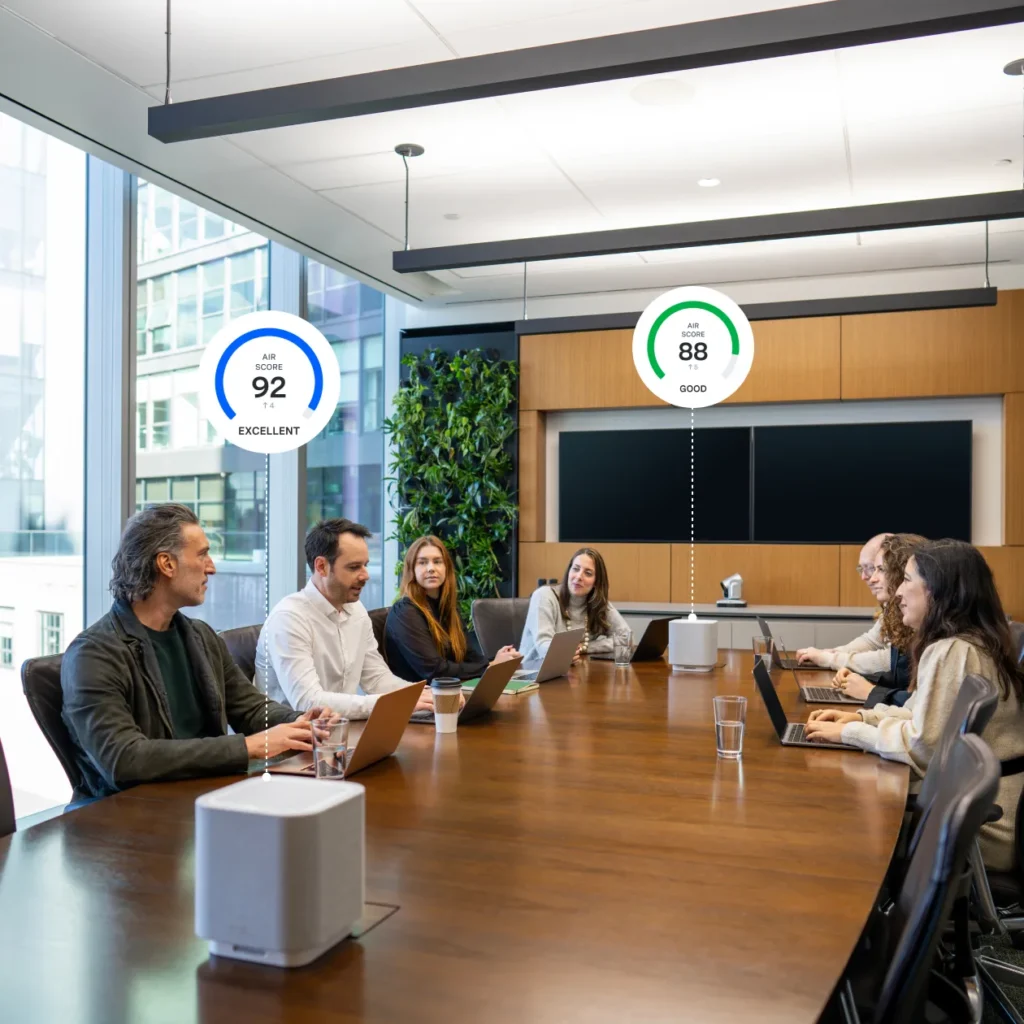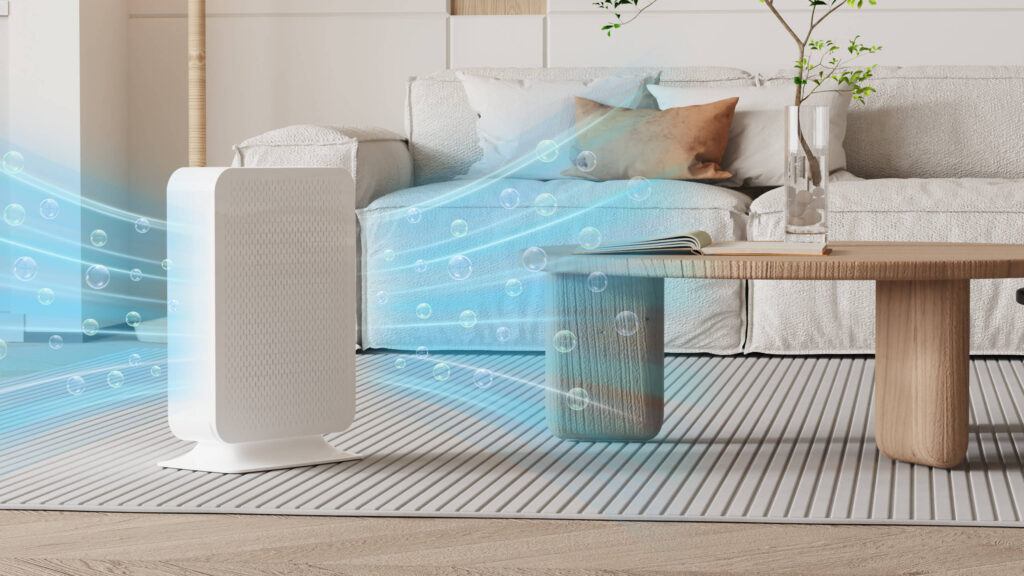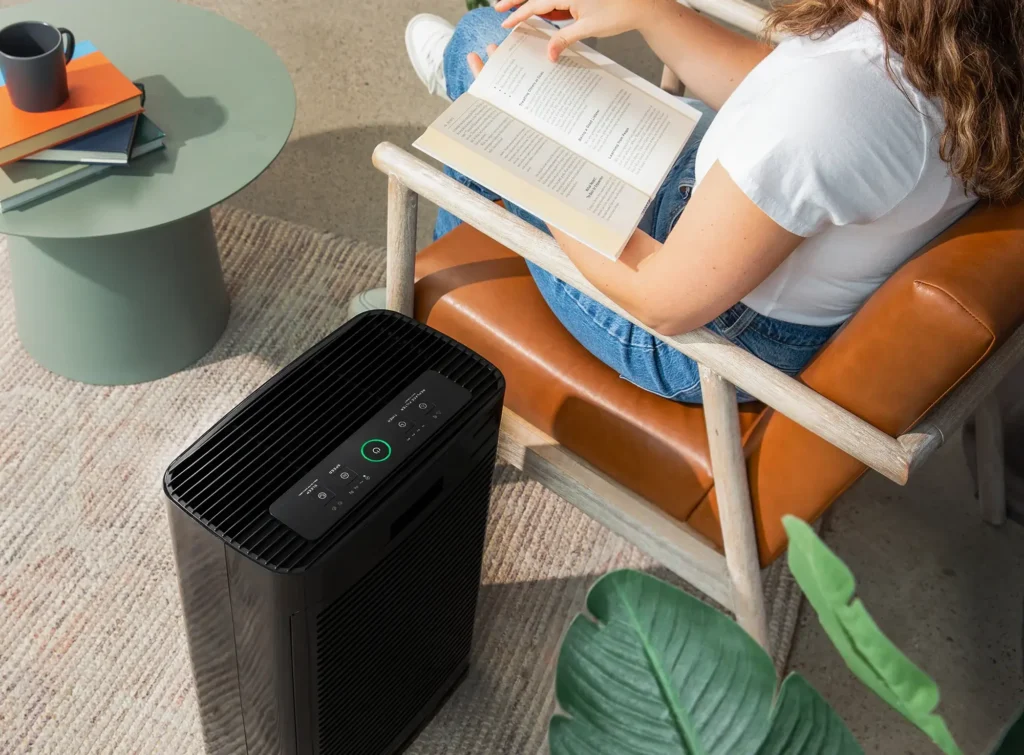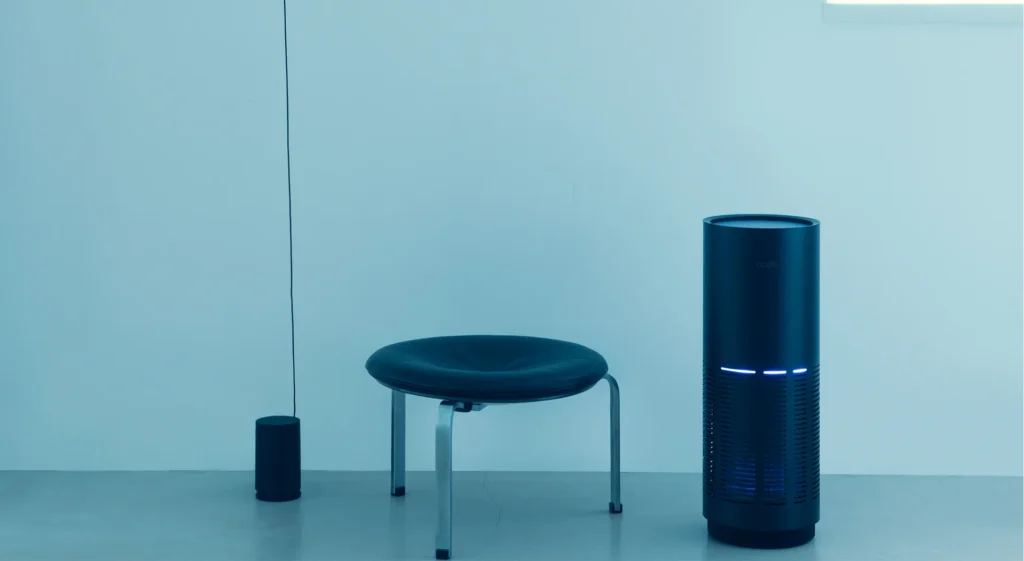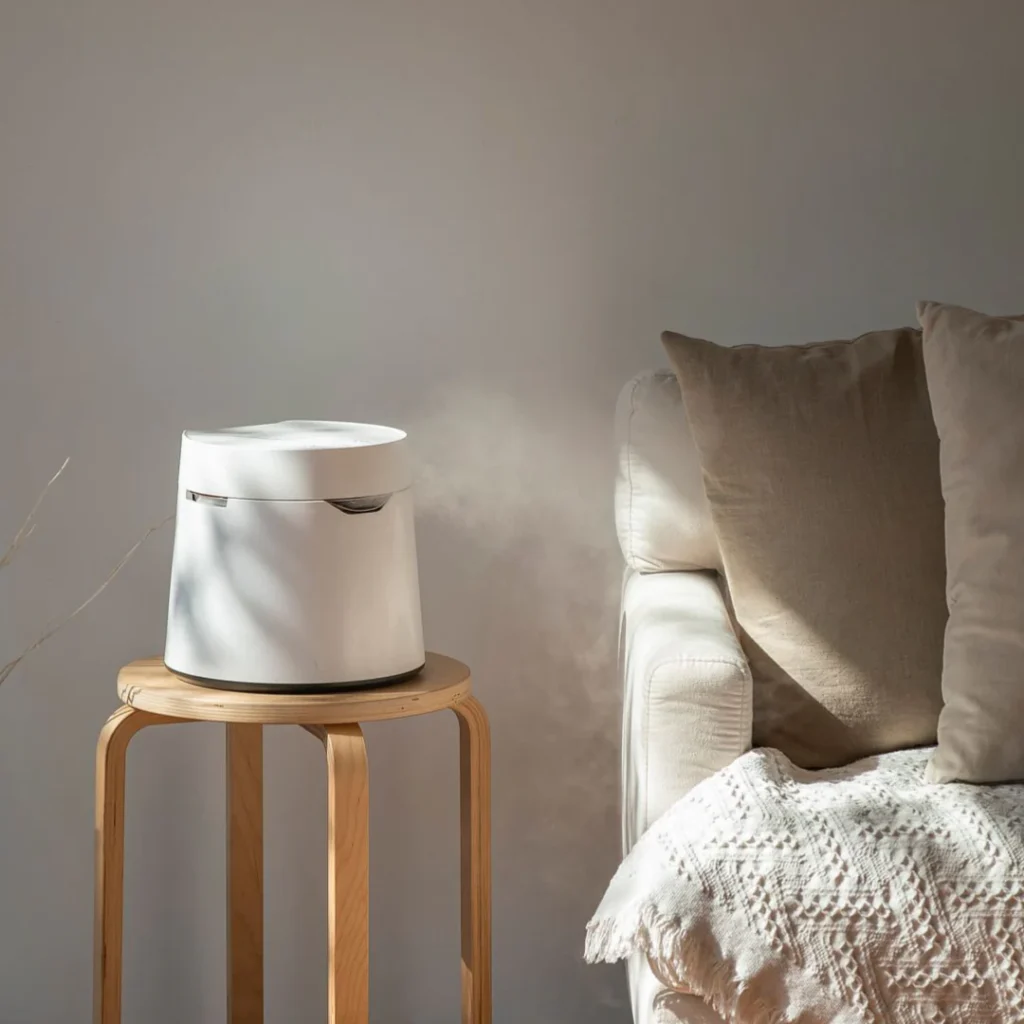إن الوضع الصحيح لأجهزة تنقية الهواء يحسّن بشكل كبير من قدرتها على إزالة الملوثات المحمولة في الهواء. ولكن أين يجب أن تضعها حقًا؟ ما هي الأشياء التي يجب أن تتذكرها عندما يتعلق الأمر بهذا الأمر؟ تابع القراءة لمعرفة الإجابات.
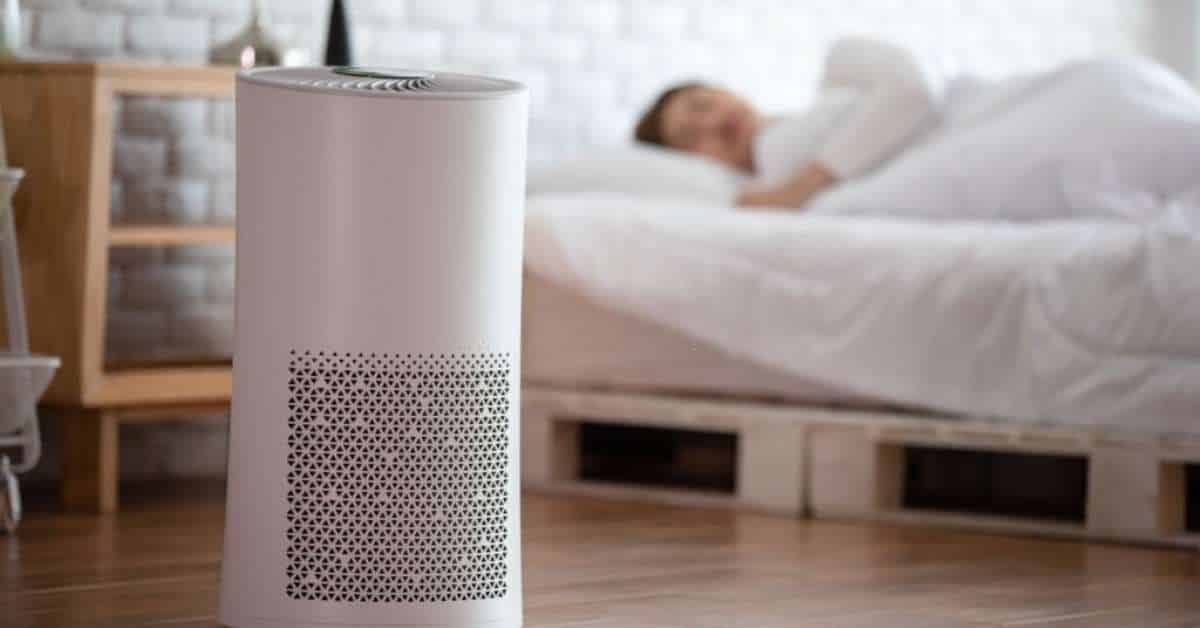
مصدر الصورة: iStockphoto
أجهزة تنقية الهواء هي أدوات أساسية لتحسين جودة الهواء الداخلي. صُممت أجهزة تنقية الهواء هذه لإزالة الملوثات المحمولة جواً من خلال استخدام نظام ترشيح شامل. اعتماداً على الفلاتر، من الممكن لجهاز تنقية الهواء إزالة المواد المسببة للحساسية ومسببات الأمراض والجسيمات والمواد الغازية. أجهزة تنقية الهواء عالية الجودة، مثل تلك التي مصنعة بواسطة هيسو إيرتُظهر كفاءة مذهلة في التخلص من الملوثات المحمولة في الهواء. ولكن بصرف النظر عن جودة أجهزة تنقية الهواء، يجب أن يعرف المرء أن وضعها يلعب عاملاً في أدائها العام.
أين يجب أن تضع أجهزة تنقية الهواء؟ الأماكن التي تحتاج إلى أجهزة تنقية الهواء
إن الحصول على هواء أنظف وتحسين استهلاك جهاز تنقية الهواء للطاقة هو حقاً بمثابة حبة الكرز على رأس الكعكة، خاصةً أثناء الجائحة.
1. الصفحة الرئيسية
2. غرف المستشفيات
3. مطعم
4. صالات رياضية
5. الفنادق والسفن السياحية
الصفحة الرئيسية #1

المنزل هو المكان الذي يمكث فيه معظمنا الآن، خاصةً مع الإغلاق المستمر وسيناريوهات العمل من المنزل والدراسة من المنزل. تساعد آلات تطهير الهواء في استعادة الهواء الفاسد الذي يعاد تدويره داخل منزلك. كما أنها تقلل من تلوث الهواء الداخلي وتنظف الهواء من البكتيريا والغبار والكائنات الدقيقة التي تسبب التهيج والتهابات الجهاز التنفسي.
أين تضع جهاز تعقيم الهواء في منزلك؟
إليك الأماكن التي يمكنك وضع جهاز تنقية الهواء فيها في منزلك.
- غرفة المعيشة - حيث يجتمع الناس معاً ويبقون لفترات طويلة.
- غرفة الطعام - من أين تأتي الروائح والروائح المختلفة
- غرفة النوم - لتقليل تهيج الجهاز التنفسي ومحفزات الربو أثناء النوم
أي جزء من المنزل تقضي فيه وقتك أكثر من غيره؟ ما هي الغرف التي لا تستخدمها على الأرجح؟
القاعدة الأساسية هي وضع جهاز لتنقية الهواء في غرفة النوم وآخر في غرفة المعيشة.
إذا كان لديك شقة استوديو، يمكنك استخدام جهاز تنقية الهواء المكتبي الذي يغطي حجم مكانك.
مستشفى #2

يمكن أن يؤدي استخدام أنظمة تنظيف الهواء في منشآت كوفيد 19 إلى الحد من انتشار المرض عن طريق امتصاص الهواء المصاب وتنظيفه.
يمكن لجهاز الهواء النقي عالي الأداء تنظيف الهواء الداخلي وتنقيته من فيروس كورونا المستجد . بالإضافة إلى ارتداء الأقنعة ومعدات الوقاية الشخصية وغسل اليدين واستخدام معقمات اليدين الكحولية ، يمكن إضافة أجهزة تنقية الهواء كاستراتيجية لمكافحة العدوى في المستشفيات.
أين نضع أجهزة تنقية الهواء في المستشفيات؟
يمكنك وضع أجهزة تنقية هواء عالية الأداء من فئة المستشفيات في غرف منشأة الرعاية الصحية التالية لتوصيل الهواء الخالي من العدوى وتعميمه.
- بالقرب من المرضى المصابين أو غرف المرضى
- المواقع المولدة للهباء الجوي أو غرف توليد الهباء الجوي
- المركبات المغلقة التي يتم فيها نقل المرضى قيد التحقيق (PUI)
- غرف المستشفى
- غرف الجراحة
مطعم #3

المطاعم البيئات عالية المخاطر حيث يخلع الناس أقنعة الوجه عند تناول الطعام. وعلى الرغم من أن هذه تتخذ المؤسسات الاحتياطات اللازمة في الحفاظ على التباعد المناسب بين الطاولات بمسافة 6 أقدام بين كل طاولة وأخرى، لا يزال مركز مكافحة الأمراض والوقاية منها يصف تناول الطعام في الموقع بأنه نشاط عالي الخطورة .
هذا هو المكان أجهزة تنقية هواء True HEPA القوية يمكن أن تساعد في الحد من ملوثات الهواء والفيروسات لحماية رواد المطاعم والعاملين في المطاعم من الإصابة بعدوى فيروس كورونا. يمكن لأجهزة تنقية الهواء HEPA الحقيقية أن تكون استراتيجية دفاعية مكملة للمطاعم، إلى جانب التباعد الاجتماعي والتهوية المناسبة والتعقيم.
علاوةً على ذلك، يمكن أن تساعد أجهزة تنقية الهواء المزودة بمرشحات الأشعة فوق البنفسجية وتقنية HEPA في حبس الكائنات الدقيقة المسببة للمرض وقتلها وتوفير بيئة داخلية أكثر أماناً لرواد المطعم.
#4 جيم #4

صالات الألعاب الرياضية هي المكان الذي يمكن العثور فيه على الكثير من الأنشطة التي تتسبب في التعرق وكثرة التنفس. يمكن أن تشكل هذه المنشآت خطراً كبيراً على الأشخاص خاصةً عندما لا توجد تهوية مناسبة حيث يمكن أن ينتشر الهواء الفاسد والمصاب بالعدوى.
وفقاً ل وكالة حماية البيئة في كاليفورنيا فإن الرجال والنساء الذين يمارسون التمارين الرياضية يستهلكون 40 لترًا من الهواء أكثر من الجلوس. تميل مراكز اللياقة البدنية إلى أن تكون مليئة بالمواد الكيميائية المنقولة بالهواء مثل ثاني أكسيد الكربون والغبار والفورمالديهايد. وبسبب سوء التهوية وتنقية الهواء في بعض الصالات الرياضية، فإن مستويات تلوث الهواء مرتفعة.
كما هو الحال في المطاعم، تحتاج مرافق التمارين الرياضية إلى هواء نقي كل دقيقة حيث يزداد استهلاك الناس للهواء أثناء التمارين.
لمرافق التمارين الرياضية والصالات الرياضية, أجهزة تنقية الهواء التجارية لتنقية الهواء تقليل الجسيمات الدقيقة والغازات الضارة من خلال فلتر HEPA. ومن خلال ذلك، يتم أيضاً ترشيح المركبات العضوية المتطايرة أو المركبات العضوية المتطايرة من خلال وسائط الكربون المنشط.
ولاحظ أنه يمكنك استخدام أجهزة تنقية هواء الصالة الرياضية المنزلية إذا كان لديك صالة رياضية داخلية تمارس فيها أنت وعائلتك التمارين الجماعية.
فندق #5
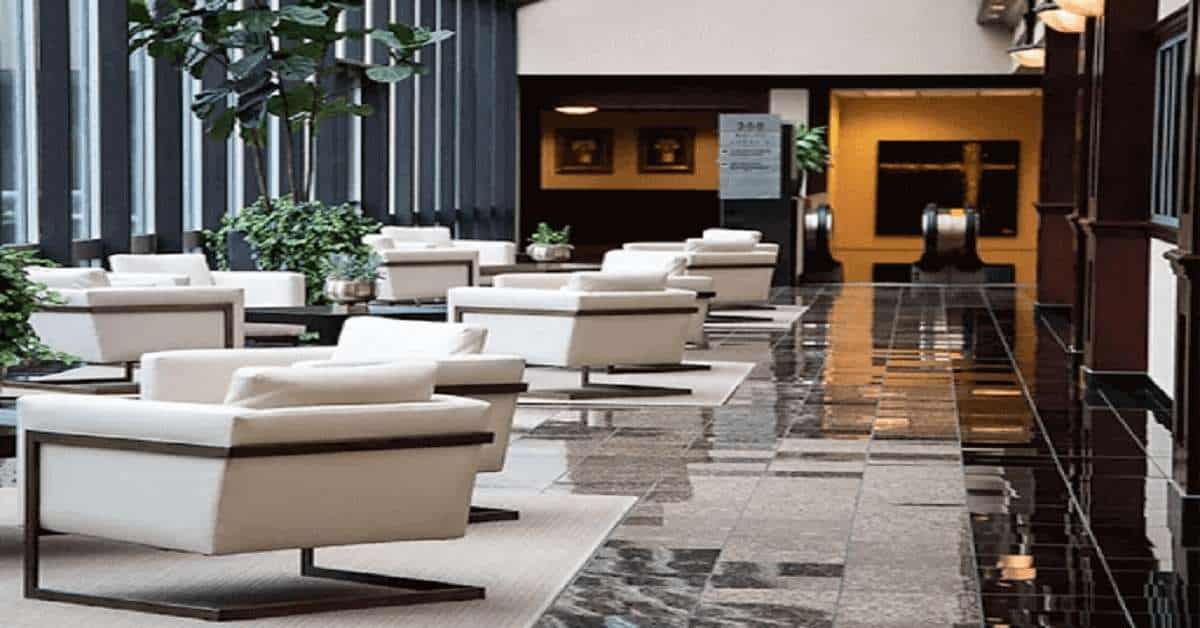
يمكن للفنادق والسفن السياحية كونها أماكن يقضي فيها الأشخاص وقتاً للاسترخاء والإقامة في رحلات العمل أن تنشر فيروس كوفيد-19 بسهولة. وبالتالي، يجب استخدام أجهزة تنقية الهواء HEPA من فئة المستشفيات في هذه الأنواع من الأماكن لتوفير احتياطات سلامة إضافية للأشخاص.
وقال كارلوس سارمينتو، المدير العام لفندق باسو ديل نورتي في تكساس: "أفضل وسيلة راحة يمكن أن يوفرها أي فندق في ظل هذه الظروف هي السلامة، خاصة في الجو".
أجهزة تنقية الهواء في الفنادق هي إضافة إلى نظام التدفئة والتهوية وتكييف الهواء المصمم بشكل جيد والذي يوفر حماية إضافية ضد الدخان والروائح والغبار والمواد المسببة للحساسية.
هل يهم المكان الذي تضع فيه جهاز تنقية الهواء؟
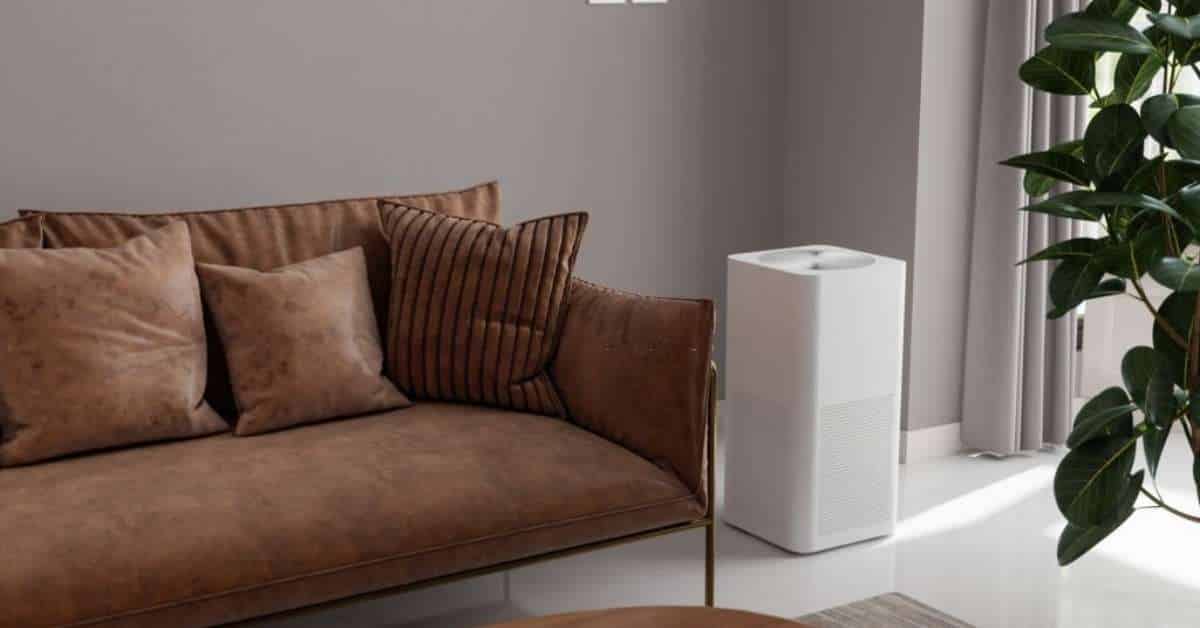
مصدر الصورة: iStockphoto
نعم. بالتأكيد. كما ذكرنا، فإن وضع جهاز تنقية الهواء سيحسن أو يقلل من أدائه. ضعها بشكل صحيح، وستكون قادرة على معالجة كميات كبيرة من الهواء في فترة معينة. حتى أقوى أجهزة تنقية الهواء ستتطلب منك وضعها في المكان الأكثر استراتيجية ومثالية.
لن تتمكن أجهزة تنقية الهواء التي يتم وضعها بشكل غير صحيح، مثل وضعها في منتصف الأثاث الشاهق، من العمل بشكل صحيح. فهي لن تمتص الهواء بشكل كافٍ، الأمر الذي سيؤدي بدوره إلى التكاثر المستمر للملوثات المحمولة جواً.
يمكنك دائمًا زيادة الإمكانات الكاملة لأجهزة تنقية الهواء هذه من خلال وضعها في الأماكن والمواقع الصحيحة. إنها استراتيجية بسيطة ولكنها فعالة لضمان قيام جهاز تنقية الهواء بعمله بشكل جيد!
العوامل التي تحدد مكان وضع أجهزة تنقية الهواء
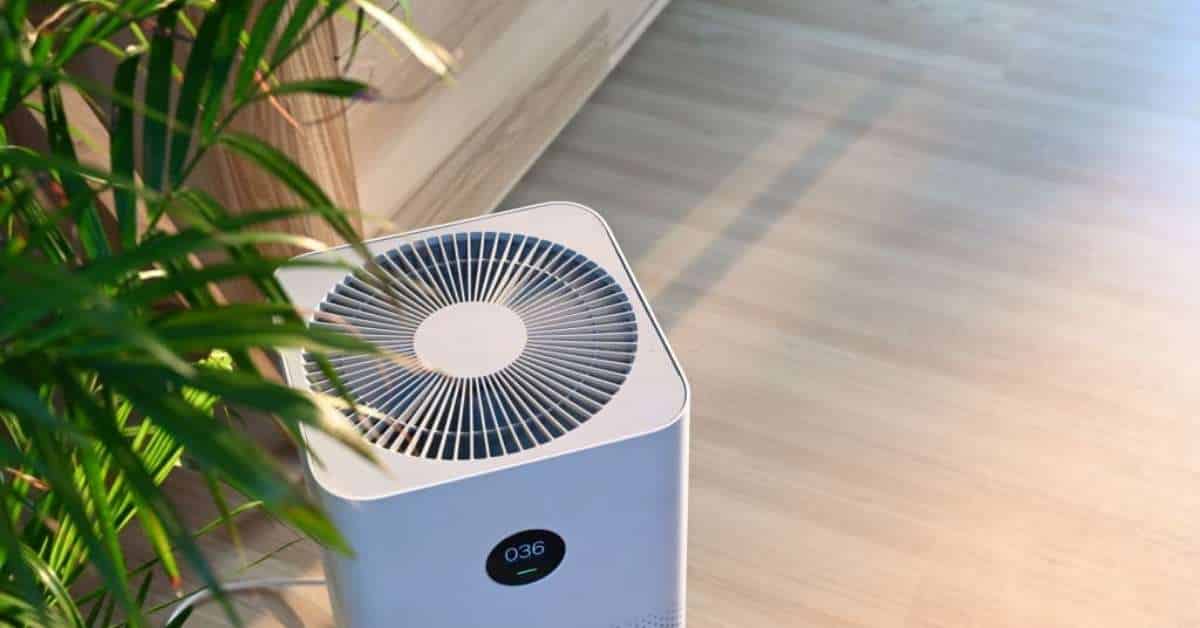
مصدر الصورة: iStockphoto
قد تؤثر بعض الجوانب على الوضع المثالي لجهاز تنقية الهواء في الغرف وأماكن المعيشة. وبصرف النظر عن الاعتبارات المادية على وجه التحديد، يجب أن تضع في اعتبارك أنت وأفراد أسرتك كمستخدمين.
في بعض الأحيان، قد تتسبب أجهزة تنقية الهواء هذه في بعض مشاكل الحساسية لدى بعض الأشخاص. في حين أنه من الصحيح أن أجهزة تنقية الهواء هذه غير ضارة بشكل عام، إلا أنه لا يزال من الضروري توخي الحذر حتى لا تواجه مشاكل أثناء استخدامها.
على وجه التحديد، تحتاج إلى تقييم مستوى احتياجاتك وحساسيتك للملوثات.
العيون
ومما يثير القلق أن التعرض للملوثات المحمولة جواً يمكن أن يسبب متلازمة جفاف العين. يمكن أن تؤدي هذه الحالة إلى عدم قدرة الشخص على إنتاج الدموع. وفي الوقت الراهن، تشير التقديرات إلى أن أكثر من أربعة ملايين شخص (50 سنة فما فوق) في الولايات المتحدة يعانون من هذه المشكلة.
وفقاً ل وكالة حماية البيئة الأمريكية، ملوثات الهواء الداخلي هي السبب الشائع لمشاكل جفاف العين. إذا كنت تعاني حاليًا من هذه الحالة، فمن الأفضل أن يكون لديك جهاز لتنقية الهواء بالقرب منك أو في المناطق التي تكثر فيها الإقامة في منزلك، مثل غرف النوم والمطبخ وغرف المعيشة.
الأنف
وبطبيعة الحال، فإن أنفك هو أكثر من يعاني من هذه الملوثات في الأماكن المغلقة. ففي نهاية المطاف، أنت تميل إلى استنشاق هذه الملوثات المحمولة في الهواء. وبدون جهاز تنقية الهواء، سينتهي بك الأمر باستنشاق أكثر مما يسمح به جسمك.
بعض الناس لديهم أنوف شديدة الحساسية مقارنة بالآخرين. وبالتالي، إذا مرّ أحد الملوثات عبر ممراتهم الأنفية، فسوف يتهيجون بسرعة. لهذا السبب، من المهم ألا يكون جهاز تنقية الهواء قريباً جداً منك. ففي النهاية، ضعي في اعتبارك أن أجهزة تنقية الهواء تمتص الملوثات. إذا كان قريبًا جدًا منك، فسوف تمتص أيضًا كمية كبيرة من الجسيمات المحمولة في الهواء.
كما هو الحال دائماً، احرصي على أن يكون جهاز تنقية الهواء متاحاً بين الأشياء والأشخاص. دعه يقوم بعمله.
ردود الفعل التحسسية
أحد العوامل المهمة في وضع جهاز تنقية الهواء هو قابلية الأشخاص للإصابة بالحساسية. هنا، سترغب في أن يكون جهاز تنقية الهواء موجوداً في الغرف التي توجد فيها هذه المواد المسببة للحساسية المحتملة.
على سبيل المثال، يجب أن تكون أجهزة تنقية الهواء هذه موجودة في المناطق التي توجد بها أبواب ونوافذ. أثناء موسم الحساسية، يمكن أن تتسبب الملوثات الخارجية المحمولة في الهواء مثل حبوب اللقاح في حدوث نوبات متكررة من الحساسية. نظرًا لأن هذه الجسيمات صغيرة، فمن السهل عليها اختراق المساحات الداخلية الخاصة بك. فجوة صغيرة في النافذة أو الباب هي بوابة كبيرة لهذه الملوثات المجهرية.
يمكن لأجهزة تنقية الهواء أن تتصدى لتأثيراتها المحتملة على جسمك. استثمر في أجهزة تنقية الهواء الكبيرة لضمان تنقية الهواء بسرعة أكبر.
نصائح حول وضع أجهزة تنقية الهواء في أماكن مختلفة
قد يعتمد الوضع المثالي لأجهزة تنقية الهواء على نوع الغرفة أو المساحة التي تتعامل معها. فسواء كانت غرفة نومك أو حمامك، عليك التأكد من وضع أجهزة تنقية الهواء هذه بشكل صحيح للحصول على أفضل النتائج المفيدة. فيما يلي ملخص سريع لأجهزة تنقية الهواء المثالية التي يمكنك استخدامها لغرفك ومنازلك ومساحات المعيشة الأخرى. من الأفضل أن تتحقق منها!
نظرة عامة سريعة على موقع جهاز تنقية الهواء (مع التوصية بأجهزة تنقية الهواء ذات العلامات التجارية)
| الأماكن التي تحتاج إلى أجهزة تنقية الهواء | جهاز تنقية الهواء الموصى به | التغطية | CADR |
|---|---|---|---|
| جهاز تنقية الهواء للمرآب | هيسو إير موديل HA-1601 | 55-94 متر مربع | 800 م3/ساعة |
| جهاز تنقية الهواء لمخطط الطابق المفتوح | هيسو إير موديل HA-1968 | 90-180 متر مربع | 1500 م3/ساعة |
| جهاز تنقية الهواء للمساحات الصغيرة | هيسو إير موديل HA-139 | 28-48 متر مربع | 400 م3/ساعة |
| جهاز تنقية الهواء للقبو | هيسو إير موديل HA-138 | 49-84 متر مربع | 707 م3/ساعة |
| جهاز تنقية الهواء لصالون الشعر | هيسو إير موديل HA-139 | 28-48 متر مربع | 400 م3/ساعة |
| جهاز تنقية الهواء للمكتب في العمل | هيسو إير موديل HA-W400 | 30-50 متر مربع | 444 م3/ساعة 444 |
| جهاز تنقية الهواء للطهي في المطبخ | هيسو إير موديل HA-1601 | 55-94 متر مربع | 800 م3/ساعة |
| جهاز تنقية الهواء للطابق السفلي الكبير | هيسو إير موديل HA-1968 | 90-180 متر مربع | 1500 م3/ساعة |
| جهاز تنقية الهواء للفصول الدراسية | هيسو إير موديل HA-1968 | 90-180 متر مربع | 1500 م3/ساعة |
| منقي هواء لغرفة الطفل | هيسو إير موديل HA-138 | 49-84 متر مربع | 707 م3/ساعة |
| جهاز تنقية الهواء للسكن الجامعي | هيسو إير موديل HA-139 | 28-48 متر مربع | 400 م3/ساعة |
السيارات
يحتاج المرآب الخاص بك إلى خدمة جهاز تنقية الهواء لأنه غير متصل بنظام التدفئة والتهوية وتكييف الهواء. وبالتالي، من الممكن أن تكون جودة الهواء فيه أسوأ بكثير من الأجزاء الأخرى من الممتلكات الخاصة بك. عادةً ما تتواجد فيه مسببات الحساسية والغبار والبكتيريا والفيروسات. عند وضع جهاز تنقية الهواء في المرآب الخاص بك، اختر منطقة لا توجد فيها عوائق. ففي النهاية، أنت تريد أقصى تدفق هواء ممكن. وفي الوقت نفسه، ضع في اعتبارك وضعه بالقرب من مصدر ملوثات الجسيمات، مثل الغبار ورذاذ الطلاء.
مخطط الطابق المفتوح
في الطوابق المفتوحة، تعتبر المساحة مشكلة في الطوابق المفتوحة. يجب عليك قدر الإمكان اختيار جهاز تنقية الهواء الذي يتمتع بتغطية مناسبة. على سبيل المثال، إذا كان مخطط الطابق المفتوح يحتوي على مساحة 700 قدم مربع، فيجب أن يكون لجهاز تنقية الهواء نطاق فعال لا يقل عن 700 قدم مربع.
بهذه الطريقة، ستكون واثقًا بما يكفي لوضع جهاز تنقية الهواء في المساحة المذكورة. تحتوي مخططات الطوابق المفتوحة على الحد الأدنى من الغرف والمساحات المغلقة. وبالتالي يمكنك وضع جهاز تنقية الهواء في منتصف المساحة بأكملها. بدون عوائق وقيود، سيكون جهاز تنقية الهواء قادرًا على التقاط أكبر عدد ممكن من الملوثات.
إذا كان سقف مخطط الأرضية مرتفعاً، فقد تحتاجين إلى وضع جهاز تنقية الهواء في مكان مرتفع.
المساحات الصغيرة
في مساحة صغيرة، تكون المساحة التي يمكنك توفيرها لجهاز تنقية الهواء محدودة. لنفترض أن الغرفة مزدحمة ومليئة بالأغراض. وهذا يعني أنك ستواجه صعوبات في وضع عنصر يحتمل أن يكون ضخمًا مثل جهاز تنقية الهواء.
إذا كان الأمر كذلك، فما تحتاج إليه هنا هو جهاز تنقية هواء شخصي محمول. تتميز أجهزة تنقية الهواء هذه ببنية مدمجة، بحيث يمكنك وضعها بسهولة فوق أثاث أو منصات معينة، مثل الطاولات.
تأكدي من أن جهاز تنقية الهواء لا يزال في الجزء الأوسط من الغرفة أو في منطقة خالية من العوائق. يمكنك وضعه على الجانب، ولكن لا تدفعه على الحائط.
الطابق السفلي
عادةً ما تكون الطوابق السفلية فارغة أو نادرة من الأغراض. إذا كان هذا الوصف ينطبق على المكان الذي تعيشين فيه، فيمكنك وضع جهاز تنقية الهواء في منتصف الغرفة. وبهذه الطريقة، سيكون قادراً على امتصاص العفن الذي يطفو في الهواء. حتى أن أجهزة تنقية الهواء يمكنها إزالة الرائحة العفنة في المنطقة المذكورة.
بما أن الطوابق السفلية ذات سقف منخفض، فلا داعي لوضع جهاز تنقية الهواء في مكان مرتفع. يمكنك وضعه على الأرض وتركه يقوم بالعمل.
إذا كان القبو الخاص بك به تسريبات، تأكد من إصلاحها بشكل صحيح. يمكن أن تتسرب المياه عبر نظام جهاز تنقية الهواء، مما قد يتسبب في تلفه. إذا كانت عملية الإصلاح لا تزال جارية، فقط تأكد من أن الجهاز ليس في طريق التسريبات.
صالون تصفيف الشعر
صالونات الشعر مليئة بالملوثات المختلفة. على سبيل المثال، يمكن أن يسبب الأسيتون والفورمالدهايد الموجودان في طلاء الأظافر تهيجاً في الجلد والعينين. وتتضمن الملوثات المحتملة الأخرى الروائح والأبخرة والأبخرة المنبعثة من منتجات الشعر.
بسبب تهديدات المواد الكيميائية السامة، من الضروري وجود جهاز لتنقية الهواء في صالونات تصفيف الشعر. ونظرًا لأن الصالونات عادةً ما تتلقى حركة بشرية عالية، بسبب الموظفين والزبائن، فمن الصعب جدًا وضع جهاز تنقية الهواء في الجزء المركزي منها. أفضل خيار لك هنا هو وضع جهاز تنقية الهواء في مكان لا يزعجه الناس.
لا تضعه على الزوايا أو الجدران مباشرة. فذلك سيمنع جهاز تنقية الهواء من امتصاص الهواء وإعادة توزيعه في الغرفة. إذا كان ذلك ممكناً، ضعي جهاز تنقية الهواء في المكان الذي يوجد فيه مستوى زائد من الملوثات. على سبيل المثال، إذا كانت إحدى مناطق الصالون نفاذة بالفعل بسبب رائحة كيميائية، فيجب أن يكون جهاز تنقية الهواء هناك.
المكتب
من الشائع أن تحتوي المكاتب على أجهزة تنقية الهواء على المكاتب. وكما ذكرنا، عادةً ما تكون أجهزة تنقية الهواء هذه صغيرة الحجم بطبيعتها. فهي ليست كبيرة الحجم، وتدفق الهواء فيها ليس بنفس قوة أجهزة تنقية الهواء كاملة الحجم. وفي الوقت نفسه، فهي فعالة بالفعل في توفير تنقية الهواء الشخصية. طالما أن جهاز تنقية الهواء صغير الحجم وصامت وخالٍ من البقايا، يمكنك وضعه على طاولة مكتبك.
بالطبع، لا تتردد في عدم وضعه أمامك. فليكن على زاوية أو حافة الطاولة. وبهذه الطريقة، لن يزعجك عن القيام بمهامك. وفي نفس الوقت، تأكد من أنه ليس في مكان يمكن أن تتعثر أو تنقلب فيه عن طريق الخطأ.
إذا تعذّر ذلك، يمكنك التفكير في تركيب جهاز تنقية هواء جداري بدلاً من ذلك. فهي أقل اقتحاما وتوفر تغطية أكبر من أجهزة تنقية الهواء المدمجة.
الطهي في المطبخ
يعد طهي الطعام أمرًا ممتعًا ولذيذًا إلى أن تبدأ رائحة الأطباق وأواني الطهي في التعفن. بالتأكيد، أنت على دراية بهذه الرائحة الكريهة، وتريد حقًا إنهاء هذه المحنة الشيطانية. أجهزة تنقية الهواء فعالة في إزالة الروائح الكريهة في الهواء، خاصة إذا كانت مزودة بفلاتر كربون عالية الجودة. وبالتالي، فهي مناسبة لمطبخك.
في هذا الوضع، ستحتاجين إلى أن لا يعترض جهاز تنقية الهواء طريق الأشخاص الذين يتجولون ويتسكعون في المكان. يجب ألا تضعه في المنتصف. يجب ألا تضعه أعلى الطاولات أيضاً. ضعي في اعتبارك أن أجهزة تنقية الهواء تمتص الملوثات. إذا كان بالقرب من الطعام أو المكونات التي تقومين بتحضيرها، فقد يحدث تلوث محتمل. لذلك، عليك وضع جهاز تنقية الهواء على الأرض. يمكن أن يكون بالقرب من الحائط ولكن ليس وضعه في مواجهته.
قبو كبير
كما ذكرنا، فإن الطوابق السفلية معرضة أيضاً لانتشار الملوثات المحمولة جواً. وهذا صحيح بشكل خاص إذا كانت هناك مشاكل العفن الموجودة هناك. وتساعد أجهزة تنقية الهواء في التحكم الفعال في هذه الملوثات في الطابق السفلي. إذا كان الطابق السفلي كبير الحجم، فأنت ببساطة بحاجة إلى جهاز تنقية هواء أكبر مع معدل توصيل هواء نظيف (CADR). وهذا يضمن قدرة جهاز تنقية الهواء على معالجة الهواء، بغض النظر عن المكان الذي تضعه فيه.
مرة أخرى، يجب أن يكون الموضع المثالي لجهاز تنقية الهواء في مكان لا يعيقه أي شيء. من الناحية المثالية، يجب أن يكون في المنتصف حتى يتمكن من تنقية الهواء وتوزيعه بالتساوي في الغرفة. لا بأس إذا كان جهاز تنقية الهواء على الأرض لأن الطوابق السفلية لا تحتوي على أسقف عالية.
الفصول الدراسية
كما أن الفصول الدراسية والمدارس مليئة بالملوثات المحمولة جواً. فمن مواد البناء والغبار وحبوب اللقاح، يمكن أن يستنشق كل من المعلمين والطلاب هذه الأشياء. وقد يؤثر ذلك على أدائهم.
في هذا الإعداد، يجب أن يكون جهاز تنقية الهواء في مكان لا يزعج عملية التعلم. وبالتالي، سيكون من الأفضل أن يتم وضع جهاز تنقية الهواء في الخلف - حيث لا يمكن رؤيته أو سماعه. لا حاجة لوضع جهاز تنقية الهواء في الأمام. سيصبح مصدر إلهاء فقط. طالما أن جهاز تنقية الهواء قوي بما فيه الكفاية، فسوف يعالج مشاكل الملوثات المحمولة جواً في فصلك الدراسي!
غرفة الطفل
طفلكِ معرض للإصابة بالأمراض. في الواقع، إن التعرض الخفيف للملوثات مثل الغبار يمكن أن يسبب له المرض بالفعل! وبالتالي، من الضروري وجود جهاز لتنقية الهواء في غرفة الطفل أو غرفة الطفل. إحدى القواعد الذهبية هنا هي ألا يكون جهاز تنقية الهواء قريبًا جدًا من سرير طفلك. وبصرف النظر عن الضوضاء، فإن قرب جهاز تنقية الهواء من طفلك الصغير يمكن أن يعرضه للملوثات المحتملة أثناء امتصاصه للهواء.
يجب وضع جهاز تنقية الهواء على بعد ثلاثة إلى خمسة أقدام على الأقل من طفلك. يمكنك وضعه إما على سطح مرتفع أو على الأرض. يجب أن يتيح ذلك تشغيل الجهاز باستمرار دون إزعاج طفلك أثناء نومه.
مساكن الطلبة
جودة الهواء الداخلي للسكن الجامعي مشكوك فيها في كثير من الأحيان. ففي النهاية، تمتلئ هذه المهاجع بالأشخاص العابرين. إذا لم يتم تنظيفها بانتظام، فسوف يتراكم الغبار قريباً. يمكن أن يخترق الغبار والمخلفات والمواد المسببة للحساسية المهاجع بسهولة أيضاً. فغالباً ما تكون الأبواب والنوافذ في غرفهم ومساكنهم مفتوحة، لذا فإن تراكم الملوثات المحمولة جواً في هذه المناطق لم يعد مستغرباً.
ضعي جهاز تنقية الهواء داخل غرفتك. وهناك، يمكنك إما وضعه على الأرض أو على طاولة (إذا كان جهاز تنقية الهواء صغيراً وخفيفاً بما يكفي). يجب عليك أيضًا تقييم حجم غرفتك في السكن الجامعي. إذا كانت صغيرة وضيقة، فليس لديك خيار آخر سوى اللجوء إلى جهاز تنقية هواء صغير الحجم. أما إذا كانت واسعة بما فيه الكفاية، فيمكنك الحصول على جهاز تنقية هواء كبير ووضعه في مكان لا توجد فيه عوائق.
لا تضعي جهاز تنقية الهواء بالقرب من الباب، حيث يمكن أن يصطدم بالباب. يُعد وضعه بالقرب من النوافذ فكرة جيدة، خاصةً إذا كنت تميل إلى فتحها بانتظام.
هل يجب وضع جهاز لتنقية الهواء في كل غرفة؟
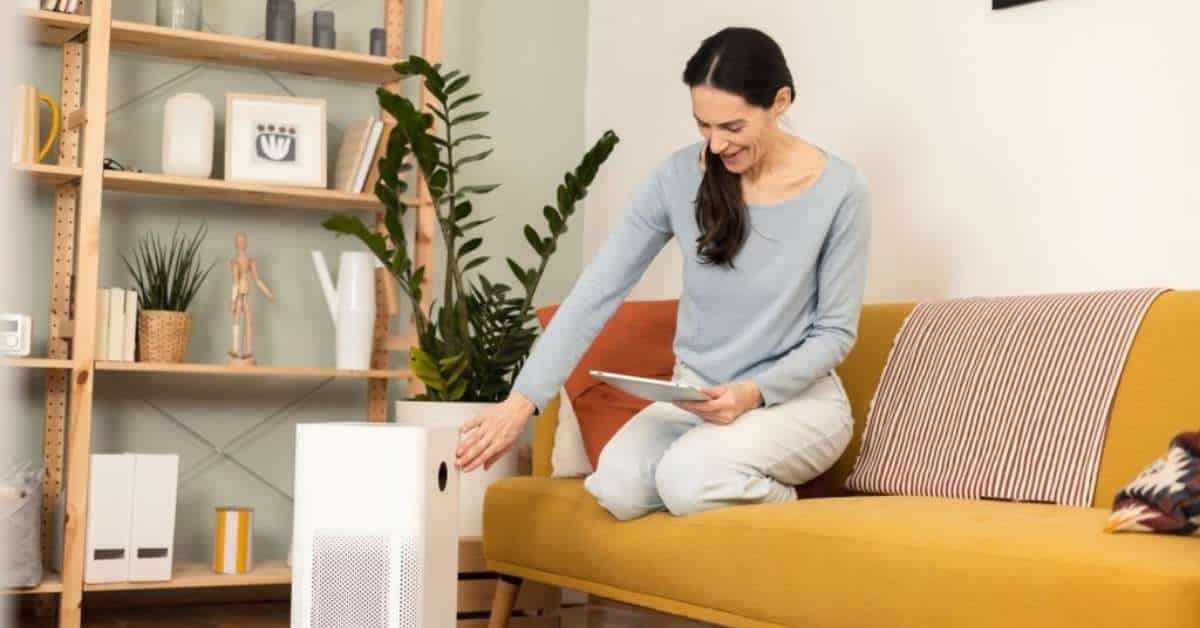
مصدر الصورة: iStockphoto
ليس بالضرورة. هناك أجهزة تنقية هواء منزلية كاملة قادرة على تغطية مناطق ذات مساحة كبيرة. يمكن لوحدة واحدة من أجهزة تنقية الهواء المنزلية الكاملة هذه أن تحافظ بسهولة على نظافة الهواء الداخلي. ومع ذلك، يمكنك أيضًا اختيار توفير جهاز لتنقية الهواء لكل غرفة في منزلك. هذا عندما لا يكون لديك جهاز تنقية هواء للمنزل بأكمله، أو عندما لا يكون لديك جهاز تنقية هواء مخصص في أجزاء محددة من منزلك (مثل غرف النوم والمطابخ).
قبل شراء أجهزة تنقية الهواء لمنزلك أو المستشفى أو المطعم، ضع في اعتبارك ما يلي:
- ما هي الغرف التي يشغلها معظم الناس في منطقتك والتي قد تحتاج إلى منظفات هواء لمنع انتشار كوفيد-19؟
- هل هناك مناطق في مصنعك أو منزلك أو مؤسستك تعاني من مشاكل في جودة الهواء مثل الغبار والدخان والمواد الكيميائية؟
- معرفة حجم الغرفة (بالقدم المربع) لمطابقة ميزات جهاز تنقية الهواء الصحيحة (CADR)
في أي اتجاه تضع جهاز تنقية الهواء؟
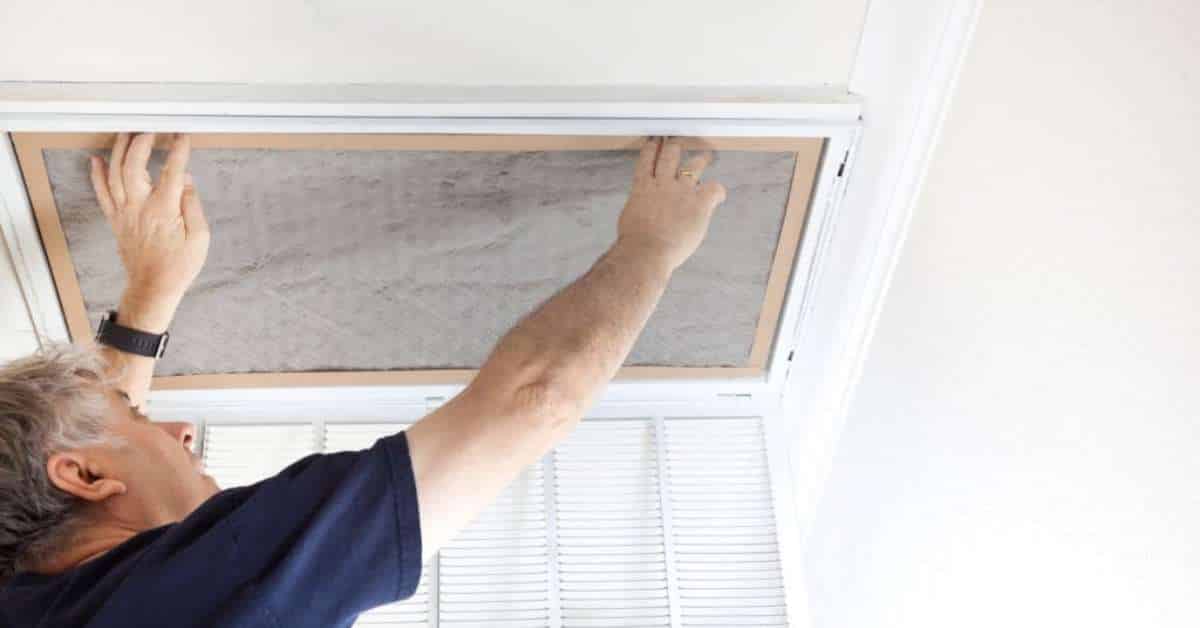
مصدر الصورة: iStockphoto
تعتمد كفاءة أجهزة تنقية الهواء على المكان الذي ستضعها فيه. يجب التأكد من أنها تعمل بشكل صحيح وخالية من العوائق والعوائق الأخرى.
في الوقت نفسه، تجدر الإشارة إلى أن أجهزة تنقية الهواء تعمل بشكل أفضل إذا تم وضعها في اتجاه معين. دعنا نستكشف هذه الأمور بالتفصيل:
مرتفعة أم منخفضة؟
عليك أن تقرر ما إذا كان جهاز تنقية الهواء سيكون في وضع مرتفع أم لا. في بعض الحالات، يجب أن تكون أجهزة تنقية الهواء في وضع مرتفع لضمان قدرتها على امتصاص أكبر قدر ممكن من الهواء.
تتميز بعض أجهزة تنقية الهواء بتدفق هواء ضعيف. وبالتالي، لا يمكنك افتراض قدرتها على امتصاص كامل الهواء المحيط بها. إذا كان منزلك يحتوي على مساحة رأسية عالية، فسيكون من الصعب على تلك الصغيرة, أجهزة تنقية الهواء المحمولة لتوفير تغطية شاملة.
عند هذه النقطة، من الواضح أن أجهزة تنقية الهواء التي تتمتع بتغطية أوسع يمكن أن توفر نتائج أكثر كفاءة في تنظيف الهواء. ففي النهاية، يمكنها امتصاص أكبر قدر ممكن من الهواء.
هناك أجهزة تنقية الهواء البرجية التي تحتوي على أجسام مرتفعة تمكّنها من امتصاص الهواء وتوزيعه. يمكن لأجهزة تنقية الهواء المنخفضة أن تنجز المهمة، خاصةً إذا كنت لا تسكن في مناطق ذات مساحة رأسية عالية.
الطابق العلوي أو السفلي
الأمر متروك لك حقًا إذا كان جهاز تنقية الهواء في الطابق العلوي أو السفلي. عادة، إذا كان لديك جهاز لتنقية الهواء في المنزل بأكمله، فلن تضطر إلى التعامل مع هذه المعضلة. ولكن بالنسبة لأجهزة تنقية الهواء في غرفة واحدة ذات التغطية المحدودة، عليك أن تقرر على أساس الحاجة الملحة.
في معظم الأحيان، يتم وضع أجهزة تنقية الهواء في الطابق السفلي لأن معظم المناطق التي تشهد حركة بشرية عالية هناك (أي المطابخ وغرف المعيشة والحمامات. إذا كان وجود الملوثات في الطابق السفلي أعلى من الطابق العلوي، فمن المنطقي أن تبقيها هناك.
بالطبع، قد ترغب أيضاً في وضع جهاز لتنقية الهواء في الطابق العلوي أيضاً. عادة ما تكون غرف النوم عرضة لانتشار الملوثات المحمولة جواً، مثل عث الغبار وحبوب اللقاح. إذا كان لديك أطفال أو أطفال رضع، وكانت غرفهم في الطابق العلوي، فإن جهاز تنقية الهواء ضروري هناك.
قد ترغب ببساطة في وضع جهاز تنقية هواء في كل غرفة من غرف منزلك إذا كنت تعتقد أنه يمكنك تحمل التكلفة وتحتاج إلى حماية مضمونة ضد الملوثات الخفية في الهواء.
الأرضية أم الطاولة؟
يجب وضع جهاز تنقية الهواء على الأرض إذا كان كبيراً جداً. يجب عدم وضع الأجهزة الثقيلة والضخمة على الطاولات، حتى لو كانت متينة. فقد تسبب خدوشاً وخدوشاً للطاولة، وهذا ليس بالأمر الجيد.
يمكنك وضع جهاز تنقية الهواء فقط إذا كان من الطراز المحمول والمدمج. أجهزة تنقية الهواء هذه صغيرة الحجم وذات تغطية محدودة. ولكنها رائعة للاستخدام الشخصي. على سبيل المثال، إذا كانت لديك غرفة عمل مخصصة في منزلك، فيجب أن تكون أجهزة تنقية الهواء هذه مناسبة لوضعها فوق الطاولة.
بخلاف ذلك، يجب أن تبقى أجهزة تنقية الهواء على الأرض. وبهذه الطريقة، يمكنها العمل بثبات. وفي الوقت نفسه، فإن وضعها على الأرض من شأنه أن يمنع سقوطها على الأرض عن طريق الخطأ. يمكن أن تؤدي الحركات الصغيرة إلى إسقاطها على الأرض، مما قد يتسبب في أضرار جسيمة للجهاز.
القواعد الأساسية عند وضع أجهزة تنقية الهواء في الأماكن المغلقة
نعلم جميعًا أن الهواء الفاسد يمكن أن يسبب الحساسية والربو وتفاقم الأمراض الموجودة. لا يمكنك التعافي بسرعة من المرض إذا تعرضت للهواء الملوث. تقوم أجهزة تنقية الهواء بتصفية الملوثات الموجودة في الهواء. ولكن لكي تحصل على أفضل النتائج، يجب أن تضعها في أنسب مكان ممكن. بالنسبة للمبتدئين، إليك بعض الإرشادات عندما يتعلق الأمر باختيار المكان المثالي الذي يجب أن تضع فيه أجهزة تنقية الهواء هذه.
#1 تجنب العوائق والمساحات الضيقة

الزوايا والأماكن التي بها الكثير من العوائق ليست أفضل الأماكن لوضع جهاز تنقية الهواء. فهذا سيمنعه من امتصاص كل الهواء الملوث في فترة زمنية قصيرة. يجب عدم وضع جهاز تنقية الهواء في مكان يمكن للأشياء أن تعيق تدفق الهواء فيه. وبالتالي، يجب عدم وضعه وسط الأثاث الشاهق وخلف الخزائن والكراسي والأرائك الكبيرة. يجب أن يكون هناك مساحة خالية من ثلاثة إلى أربعة أقدام على الأقل من جميع جوانب جهاز تنقية الهواء قدر الإمكان. وبهذه الطريقة، يمكنك ضمان عدم إعاقة تدفق الهواء أبداً. وبالطبع، كلما زادت المساحة التي توفرها لأجهزة تنقية الهواء هذه، زادت كفاءتها في إزالة الملوثات الضارة. هذا صحيح بشكل خاص إذا كان لديك جهاز تنقية هواء شخصي صغير. تتميز أجهزة تنقية الهواء هذه بتدفق هواء ضعيف، لذلك تحتاج إلى توفير أكبر قدر من المساحة لها.
أفضل الأماكن لوضع جهاز تنقية الهواء في منزلك:
- بالقرب من جوانب الجدار
- بالقرب من المدخل
- بالقرب من خزانة الملابس
- الجانب الآخر من التلفاز
نصيحة #2. ضعه بالقرب من باب منزلك
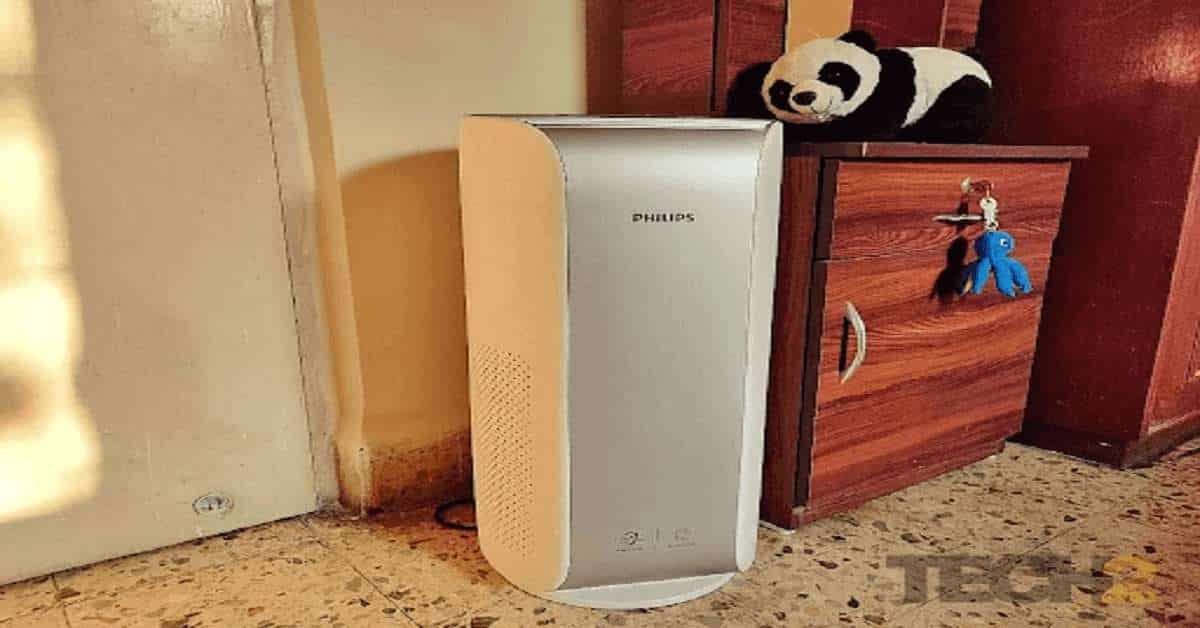
يمكنك وضع جهاز تنقية الهواء بالقرب من الباب والنوافذ حيث تأتي معظم الأتربة والتلوث. في اللحظة التي يدخل فيها الهواء الملوّث إلى منزلك أو منطقتك، سيتم تنقية معظمه بواسطة جهاز تنقية الهواء حتى قبل أن يصل إلى أنفك.
النصيحة #3. لاحظ حجم غرفتك بالنسبة لتغطية جهاز تنقية الهواء الخاص بك
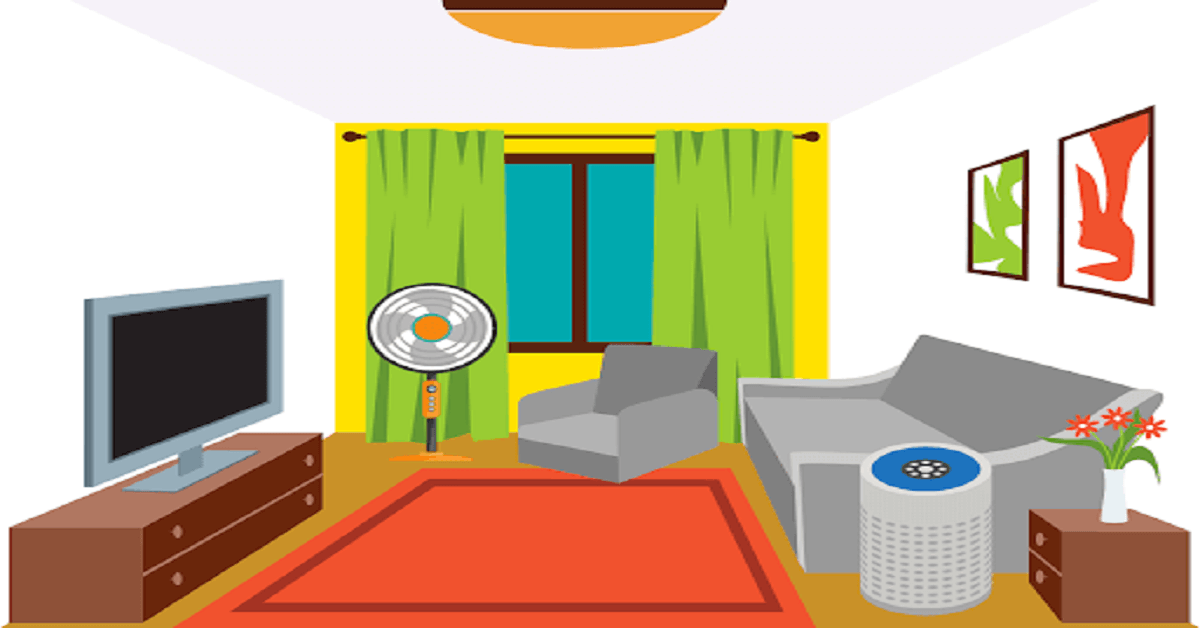
هناك قاعدتان ذهبيتان عند اختيار جهاز لتنقية الهواء:
- لا تختار جهاز تنقية هواء كبير لغرفة صغيرة و,
- لا تختار جهاز تنقية هواء مكتب صغير لغرفة كبيرة
لذا، إذا كنت ترغب في استخدام جهاز تنقية هواء غرفة كبيرة لغرفة صغيرة للتأكد من نظافة الهواء، فكر مرة أخرى. فليس هناك فائدة من إعادة تدوير الهواء الجيد بعد تنقيته وهذا لن يؤدي إلا إلى زيادة التكلفة على فواتيرك.
من ناحية أخرى، إذا كنت تستخدم جهازًا صغيرًا لتنقية الهواء، مثل طراز سطح المكتب، لتنظيف غرفة كبيرة، فلن يجدي ذلك نفعًا أيضًا. سوف يسمح فقط ببقاء الهواء الملوث في غرفتك.
#4 بعيدًا عن الإلكترونيات
في بعض الأحيان، من المغري جداً وضع أجهزة تنقية الهواء هذه بالقرب من أجهزتك الإلكترونية المفضلة. ولكن لا تفعل ذلك. وإلا فستكون هناك مشكلة في تشغيل هذه الأجهزة. يمكن أن تتسبب أجهزة تنقية الهواء، خاصةً الرقمية منها، في حدوث تشويش على أجهزة الراديو والتلفزيون والكمبيوتر. ويمكنها حتى تعطيل اتصال WiFi لتلك الأجهزة، خاصةً إذا كانت أجهزة تنقية الهواء قريبة جداً. يجب أن تكون هناك مسافة خمسة أقدام على الأقل بين جهاز تنقية الهواء وهذه الأجهزة الإلكترونية. وكلما كانت المسافة أبعد، كان ذلك أفضل.
#5 تجنب المناطق ذات الرطوبة العالية
هناك مشكلة إذا كنت ستضع جهاز تنقية الهواء في المناطق التي تكون فيها الرطوبة عالية. الرطوبة العالية تعني أن الهواء ثقيل. وهذا يضر بأجهزة تنقية الهواء. أحد أسباب ذلك هو أنه سيدفع جهاز تنقية الهواء إلى العمل أكثر لامتصاص الهواء الثقيل. والسبب الآخر هو أن الهواء الثقيل قد يتداخل مع فعالية فلتر HEPA. المناطق الشائعة ذات الرطوبة العالية هي الحمامات والمطابخ والطوابق السفلية. فالماء عنصر ثابت في هذه الأماكن. وبالطبع، فهي عرضة لإنتاج العفن، وهو شكل من أشكال الملوثات الداخلية. لذا، بالإضافة إلى تشغيل جهاز تنقية الهواء، تحتاج أيضًا إلى وضع مزيل الرطوبة فيها. تساعد أجهزة إزالة الرطوبة هذه على تنظيم الرطوبة الزائدة.
#6 وضع جهاز تنقية الهواء قريب من الملوثات الشائعة
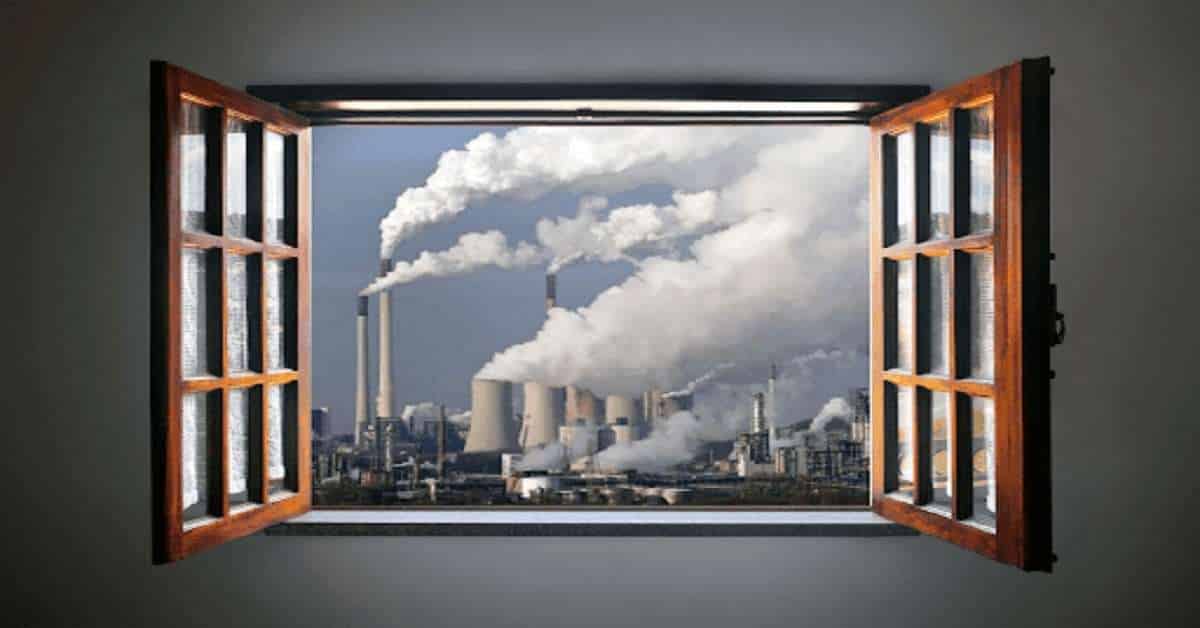
تعامل مع أجهزة تنقية الهواء كمدافعين عنك. إذا كنت تتعرض للهجوم، فأنت تريدها أن تكون في الخطوط الأمامية. وبالتالي، من المنطقي أن تضع أجهزة تنقية الهواء هذه في المناطق التي تتواجد فيها الملوثات. على سبيل المثال، إذا كان حيوانك الأليف يلعب في غرفة المعيشة الخاصة بك، فيجب أن يكون جهاز تنقية الهواء موجوداً هناك. هل يوجد في غرفة نومك عث الغبار؟ يجب أن يكون جهاز تنقية الهواء موجوداً هناك أيضاً. هل تعتقد أن قبو منزلك يعاني من مشاكل العفن؟ إنه يستحق خدمة جهاز تنقية الهواء. يمكنكِ التفكير في وضع أجهزة تنقية الهواء على النوافذ، خاصةً إذا كنتِ تميلين إلى فتحها لبضع ساعات لتدوير الهواء. وبهذه الطريقة، سيتم الحد من دخول الملوثات الخارجية. هناك أماكن معينة في منطقتك أو مؤسستك تستقبل غباراً وتلوثاً أكثر من غيرها. اكتشف الأماكن التي من المرجح أن تأتي منها الملوثات المحمولة جواً وضع جهاز تنقية الهواء بالقرب منها. هذا يجعل من الممكن لجهاز تنقية الهواء التجاري الخاص بك أن يحبس الملوثات قبل أن تصل إلى رئتيك.
#7 ضعه في الأماكن ذات الروائح الكريهة

يمكن أن يكون صندوق فضلات القطط أحد مصادر تلوث منزلك حيث تنبعث منه روائح كريهة. قد تكون بعض الأماكن الأخرى التي تنبعث منها الروائح الكريهة هي أماكن التدخين أو بالقرب من غرفة الراحة أو منطقة تناول الطعام.
إذا كان لديك حيوانات أليفة في منزلك، فإن جهاز تنقية الهواء مفيد بالتأكيد ليس فقط في حبس الروائح بل أيضاً في حبس وبر الحيوانات الأليفة.
#8 ضعه في مدخل هواء HVAC الخاص بك
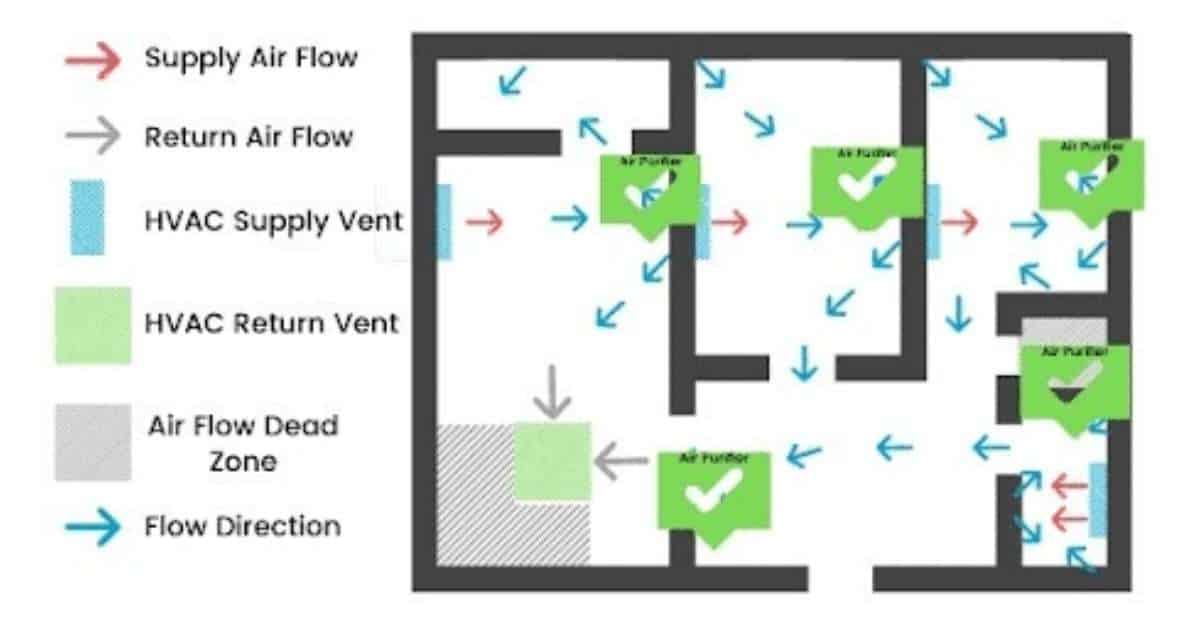
لتحسين استخدام جهاز تنقية الهواء HEPA الخاص بك بشكل كبير، يمكنك وضعه في المكان الذي نظام التدفئة والتهوية وتكييف الهواء لديك يمتص الهواء وهذا يساعد في الحد من تلوث الهواء والجسيمات الدقيقة جداً من الانجذاب إلى جهاز التكييف. ضعه بطريقة لا يتسبب الجهاز في حدوث اضطراب مع فتحات التزويد، كما هو موضح في الصورة أعلاه.
نظام التدفئة والتهوية وتكييف الهواء ليس فعالاً حقاً في تنظيف الهواء الداخلي الملوث. لذلك مع وجود جهاز لتنقية الهواء عند المدخل، سيضخ هواءً أنظف في جميع أنحاء الغرفة. هناك أيضاً وحدات لتنقية الهواء وهي مدمج مسبقاً في نظام HVAC التي لها نفس المبدأ. أجهزة تنقية هواء قوية، مثل منظفات هواء معتمدة من AHAMفعالة جداً في امتصاص الهواء. تحتوي هذه الأنظمة على محركات ومراوح قوية تمكنها من امتصاص الهواء بكفاءة. يمكنك تحديد ما إذا كان جهاز تنقية الهواء يتمتع بتدفق هواء قوي من خلال معدل توصيل الهواء النظيف.
كلما زاد الرقم، زادت قوة جهاز تنقية الهواء. على الرغم من ذلك، لا يزال عليك وضع جهاز تنقية الهواء في المناطق التي يكون فيها تدفق الهواء جيداً. فمن شأن ذلك مضاعفة ناتج جهاز تنقية الهواء. يمكنه إزالة الملوثات المحمولة بالهواء بشكل أسرع وبكميات أكبر. وبالتالي، تحتاج إلى وضع جهاز تنقية الهواء في النوافذ والأبواب والجدران. في هذه المواقع، يميل الهواء إلى التحرك كثيراً.
مخاوف أخرى قد تهمك
في أي اتجاه يدخل فلتر الهواء في الحائط؟

مصدر الصورة: iStockphoto
افترض أن منزلك يحتوي على فلاتر مدمجة. هذا جيد لك. هذا يعني أن هناك آلية إضافية تبقيك في مأمن من الملوثات المحمولة جواً. بالطبع، هذا يعني أيضًا أنك بحاجة إلى تغيير الفلتر من وقت لآخر. فهي تعمل بنفس الطريقة التي تعمل بها أجهزة تنقية الهواء.
عند إدخال فلتر هواء جديد تماماًابحث عن السهم الخاص به. يجب أن يواجه هذا السهم وحدة فلتر الهواء. لا ينبغي أن يواجه مجرى الهواء المرتجع؛ فهذا الأخير هو الذي ينقل الهواء الذي سيتم تبريده أو تسخينه.
إذا كانت الوحدة مثبتة على الحائط، فيجب أن يكون السهم الموجود على الفلتر متجهاً نحو الحائط مباشرةً. إذا كانت الوحدة مثبتة على السقف، فيجب أن يشير السهم أيضاً باتجاه السقف. تحتوي معظم فلاتر الهواء على أسهم عليها لتوجيه المستخدمين عند تركيبها. إذا لم تتمكن من العثور عليها، ابحث مرة أخرى. ابحث عن الجوانب، حيث يمكن أن يكون السهم مطبوعاً هناك.
كم من الوقت يجب أن أترك جهاز تنقية الهواء قيد التشغيل؟
هذا يعتمد. ففي النهاية، صُممت أجهزة تنقية الهواء لتعمل بشكل مستمر. حتى إذا لم تقم بإيقاف تشغيلها، فلا توجد مشكلة. في الواقع، يوصى بتشغيل أجهزة تنقية الهواء هذه دون توقف في المناطق والممتلكات التي تعاني من مشاكل تلوث الهواء الداخلي الحاد.
ومع ذلك، لا يزال بإمكانك إيقاف تشغيل جهاز تنقية الهواء. يمكنك إيقاف تشغيله إذا كنت خارج منزلك. كما يمكنك فعل الشيء نفسه إذا كنت نائماً أو إذا لم يكن هناك أحد في المنزل.
ولكن إذا كنت تعتقدين أن الملوثات المحمولة في الهواء مستمرة في أماكن معيشتك، نقترح عليك الاستمرار في تشغيل جهاز تنقية الهواء.
هل يجب عليك تشغيل جهاز تنقية الهواء مع فتح النوافذ؟
من الواضح أن أجهزة تنقية الهواء تعمل بشكل أفضل في حالة عدم وجود ثغرات أو طبقات مفتوحة. وهذا يعني أن هذه الأجهزة تكون أكثر كفاءة في حالة عدم وجود نوافذ وأبواب مفتوحة. فإغلاقها سيقلل من فرص دخول الملوثات الخارجية إلى منزلك.
ولكن بالطبع، من المستحيل أن نبقيها مغلقة طوال الوقت، أليس كذلك؟ لسبب ما، نحتاج إلى فتح نوافذنا. في هذه الحالة، هل يجب عليك إبقاء جهاز تنقية الهواء قيد التشغيل؟
في الواقع، يمكنك القيام بذلك. ولكن ضع في اعتبارك أن فعالية جهاز تنقية الهواء ستقل إذا تم تشغيله أثناء فتح النوافذ. لذا فإن أفضل طريق لك هنا هو إبقاء النوافذ مغلقة أثناء استخدام جهاز تنقية الهواء.
إذا كنت تصر على استخدام جهاز تنقية الهواء في غرفة ذات نوافذ مفتوحة، فتأكد من أن جهاز تنقية الهواء يتمتع بتغطية واسعة. على وجه التحديد، يشير هذا إلى أن جهاز تنقية الهواء يجب أن يتمتع بتغطية فعالة أوسع من المساحة الفعلية للغرفة. على سبيل المثال، إذا كانت مساحة الغرفة 300 قدم مربع، فيجب أن تكون مساحة جهاز تنقية الهواء 400 قدم مربع على الأقل!
الخاتمة
أجهزة تنقية الهواء وسيلة فعالة لتحسين جودة الهواء في منزلك والحفاظ عليه. ويمكنها القضاء على الأسباب الشائعة لمشاكل الجهاز التنفسي، مثل الغبار والأوساخ والمواد المسببة للحساسية ومسببات الأمراض.
يمكنهم القيام بهذه المهمة بمفردهم بكفاءة. ومع ذلك، يمكنك زيادة أدائها إلى أقصى حد من خلال وضعها في الموقع الصحيح. يساعد وضعها الاستراتيجي على تحسين تدفق الهواء وقدرتها على التقاط الملوثات العائمة.
إذا كان لديك منزل كبير أو منشأة طبية أو مؤسسة طبية، فعليك التفكير في المناطق التي يجب أن تضع فيها أجهزة تنقية الهواء. وذلك لحماية عملائك أو عائلتك من الإصابة بفيروس كورونا، أو الإصابة بالمرض من الغبار والمواد الكيميائية وحبوب اللقاح والمواد المسببة للحساسية.
| أجهزة تنقية الهواء لأنواع الغرف المختلفة | أجهزة تنقية الهواء الموصى بها لمختلف الملوثات | التغطية | CADR | دليل مفيد |
|---|---|---|---|---|
| المستشفيات | هيسو إير موديل HA-1601 (أجهزة تنقية الهواء من الدرجة الطبية) | 55-94 متر مربع | 800 م3/ساعة | جراثيم العفن في الهواء |
| المناطق التجارية | هيسو إير موديل HA-1968 | 90-180 متر مربع | 1500 م3/ساعة | رائحة عفن في القبو |
| السيارات والقمامة | هيسو إير موديل HA-139 | 28-48 متر مربع | 400 م3/ساعة | الرادون رائحة الدخان |
| المكتب ومساحة العمل | هيسو إير موديل HA-W400 | 30-50 متر مربع | 444 م3/ساعة 444 | غبار يطفو في الهواء |
| صالون تصفيف الشعر صالون تجميل الأظافر |
هيسو إير موديل HA-139 | 28-48 متر مربع | 400 م3/ساعة | الحساسية الموسمية |
| المنزل والمطبخ | هيسو إير موديل HA-1601 (أجهزة تنقية الهواء للعفن) | 55-94 متر مربع | 800 م3/ساعة | الفورمالديهايد رائحة الطهي في المطبخ |
| غرفة الفندق | هيسو إير موديل HA-1968 (أجهزة تنقية الهواء لـ vocs & الفورمالديهايد) | 90-180 متر مربع | 1500 م3/ساعة | الغبار |
| المدرسة والفصول الدراسية | هيسو إير موديل HA-1968 (أجهزة تنقية الهواء للدخان) | 90-180 متر مربع | 1500 م3/ساعة | رائحة الحشيش |
| غرفة المعيشة | هيسو إير موديل HA-139 | 28-48 متر مربع | 400 م3/ساعة | روائح الحيوانات الأليفة حساسية القطط بشكل طبيعي |
هل تحتاج إلى أجهزة تنقية هواء بالجملة لشركتك؟ هيسو إير هي شركة مصنِّعة لأجهزة تنقية الهواء OEM/ODM في الصين تقدم أجهزة تنقية هواء عالية الأداء للاستخدامات الطبية والصناعية. لدينا أيضًا أجهزة تنقية الهواء المكتبية للمنازل والشقق والغرف الصغيرة.


